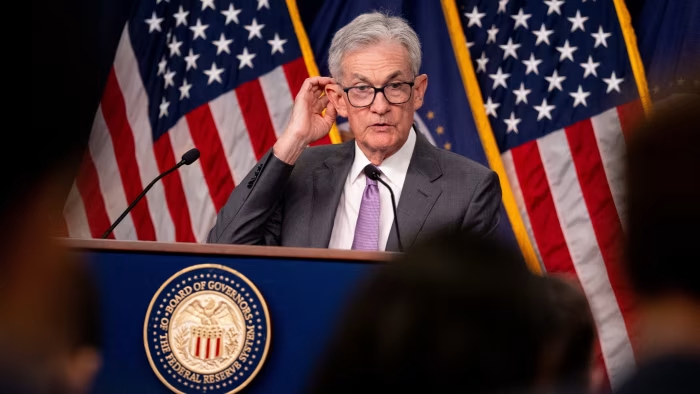
- Forex
- Stocks
Fed rate cuts – why it matters?
Do you want to know how to make money from this?
Register for free and get expert advice, access to a training course and webinars.
Key Points:
- Market participants hope the Fed can successfully reduce inflation without severely harming the economy.
- Despite expectations of easing, the dollar could strengthen if its yield remains higher than other currencies.
- The Fed’s decision will influence the policies of other central banks, such as the European Central Bank and the Bank of Canada.
The Federal Reserve’s upcoming decision on Wednesday to cut interest rates will have a significant impact on the global economy. Although the scale of the cut and the overall easing policy aren’t yet fully determined, the U.S. presidential election adds uncertainty to the situation.
Global investors and bankers are hopeful that the Fed will adjust its monetary policy and ensure a “soft landing” for the economy.
Global economic health
Unexpectedly high inflation in the U.S. this spring raised concerns among investors regarding the actions of other central banks. The question arose whether the European Central Bank or the Bank of Canada could lower interest rates if the Fed didn’t take such measures. Investors feared that without rate cuts, their currencies might significantly weaken, which would, in turn, increase inflationary pressures.
However, the Fed’s decision to begin lowering rates calmed markets in regions with weaker economies. Traders have become more proactive in forecasting rate cuts by other central banks, especially after the Fed’s rate cut expectations intensified. Nevertheless, analysts believe that in Europe, the rate cuts will be less significant, as the European Central Bank and the Bank of England remain cautious due to persistent inflation risks.
Positive expectations regarding the Fed’s rate cuts have had a favorable impact on global bond markets, which tend to correlate closely with U.S. Treasury bonds.
The dollar may strengthen
However, some countries’ expectations that U.S. interest rate cuts will lead to a weaker dollar and thus strengthen their national currencies may be unfounded. Analysts at JPMorgan note that such expectations haven’t always been met in the past: in three of the last four Fed rate-cutting cycles, the dollar actually strengthened.
The future of the U.S. dollar will depend on how its yield compares to other currencies. By the end of 2025, safe-haven currencies such as the Japanese yen and Swiss franc may significantly close the yield gap with the U.S. dollar, while the British pound and Australian dollar are expected to gain only a slight advantage.
If the U.S. dollar maintains relatively high yields, it will continue to attract foreign investors.
Support for the Stock Market Rally
The recent slowdown in global stock market growth, triggered by inflation concerns, could be replaced by a new surge if U.S. rate cuts stimulate economic activity and help avoid a recession.
It’s worth noting that in early August, global stock indices fell by more than 6% after weak U.S. labor market data was released.
“Markets always exhibit heightened volatility during the first rate cut, as investors question the reasons behind such a central bank decision,”
notes Emmanuel Cau, Head of European Equity Strategy at Barclays.
“However, if the rate cuts occur amid moderate economic growth, which aligns with the ‘soft landing’ scenario, markets typically resume their upward movement.”
Cau also added that the bank recommends focusing on sectors that would benefit from rate cuts, such as real estate and utilities.
A successful “soft landing” in the U.S. should also have a positive effect on Asian markets, although Japan’s Nikkei index has fallen by more than 10% since hitting a record high in July due to yen appreciation and rising interest rates in Japan.
Benefits for the Metals Market
Fed rate cuts are likely to have a positive impact on precious and industrial metals prices, especially copper. For copper, key factors will be demand forecasts and the successful “soft landing” of the economy.
Rate cuts and a weakening U.S. dollar create a dual positive impulse for the metals market. First, the opportunity cost of holding metals decreases, making them more attractive to investors. Second, the costs of purchasing metals fall for those using currencies other than the dollar.
Precious metals may also experience growth. Gold typically shows a negative correlation with yield, as much of its demand is driven by investment purposes. During rate-cutting periods, gold has traditionally outperformed other metals.”
Do you want to know
How to make money from the news
Register for free and get:
- Expert consultation;
- Access to the training course;
- Opportunity to participate in webinars

